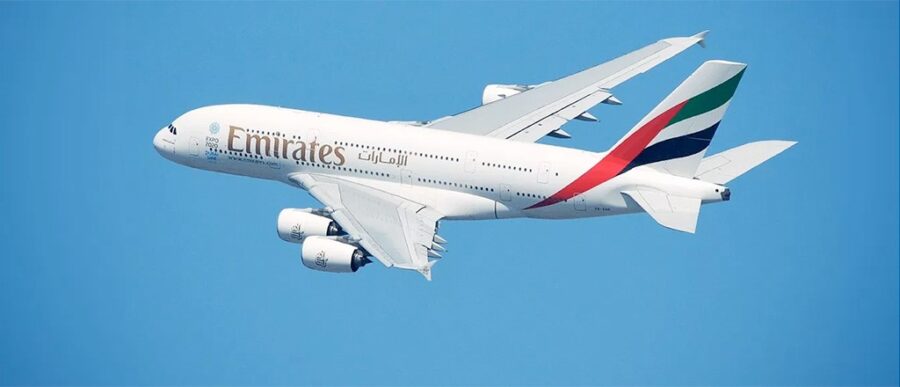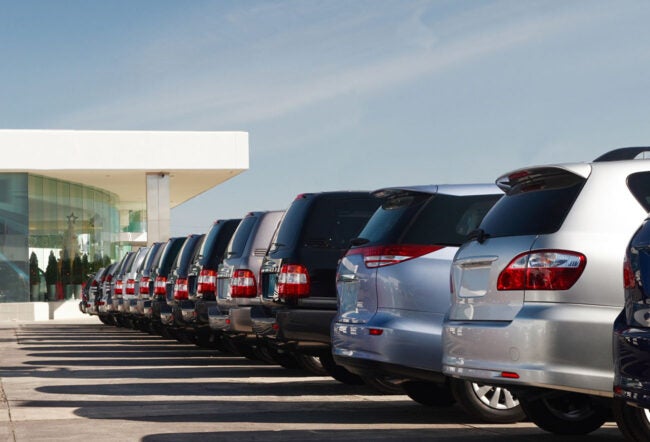More than 50 years ago, the Beatles told us that ‘All You Need Is Love.’ But Roger W. Clark, visiting professor at Rutgers University Law School where he teaches aviation law, said that statement didn’t quite live up to its promise in the case of the A380 aircraft, the largest commercial jetliner, which manufacturer Airbus said earlier this month that it plans to stop producing beginning in 2021.
“If all you needed was love, the A380 would be flying forever because it probably has the most comfortable ride,” said Clark, who has practiced aviation law for more than three decades and is also founding member and managing partner of the Clark Law Group, which has offices in California and Florida. “It’s silent. It has a very stable platform. You have an incredible amount of room, and bars and showers in first class. It’s a passenger paradise.”
As it turned out, the A380 needed some business logic as well to survive. Kenneth Button, public policy professor at George Mason University’s Schar School of Policy and Government and an expert on transportation policy, recalled a meeting he once had with the president of Air France, which was buying an A380 at the time. “I asked the [Air France] president why he was buying one. He simply used one word: politics.”
The A380 was supposed to revolutionize commercial air travel, and was launched in 1990 as a response to Boeing’s 747. The first deliveries of the A380 began in 2007 to Singapore Airlines, and the aircraft had its prime years between 2012 and 2014. Airbus announced the end of the A380 in a press release about Emirates reducing its A380 order book from 162 to 123 aircraft. Earlier this month, Australian airline Qantas, too, canceled its order for eight A380 aircraft.
Clark and Button examined the causes behind the discontinuation of the A380 on the Knowledge at Wharton radio show on SiriusXM. (Listen to the podcast at the top of this page.)
Misreading the Market
For starters, Airbus had overestimated sales of the wide-bodied, 544-seat jet. Also, the A380 is designed for passenger transport and cannot accommodate cargo, although cargo transportation was a fast-growing market, they said. The A380 also fell victim to Open Skies agreements, where airlines could respond to market demands and not be subject to political arrangements between countries on how many landings and takeoffs they would permit. Alongside, Airbus also did not anticipate the rapid growth of intermediary or secondary cities, and the ability of smaller jets to directly service them, bypassing the megacity hubs, according to a Reuters report.
Perhaps the biggest mistake Airbus made was wrongly forecasting demand for the A380. Clark noted that while Airbus expected to have about 1,500 A380s in service by 2020, it has thus far delivered fewer than 300 of them. As of January 2019, Airbus had 313 firm orders for the aircraft.
Missing the cargo market with the A380 was another failure of Airbus. “It’s not a cargo plane and it’s very difficult to convert,” said Button, adding that its main competitor, the Boeing 747, continues production of the cargo version. “[Airbus] misjudged the type of traffic that is growing.”
Although Airbus has invested an estimated $25 billion over the years to develop the A380, it targeted a relatively limited market niche. “You can’t use it for smaller routes,” said Button. “The planes which are successful and where you make your money [are those] that you can continually evolve, change, modify and stretch, like the Boeing 737. When you go for a specialized plane like the Concorde or the A380, you are really risking an awful lot on basically one type of market.”
“If all you needed was love, the A380 would be flying forever because it probably has the most comfortable ride.” –Roger Clark
The Open Skies Factor
The A380 was designed to serve large hubs in megacities, “but the markets are different now,” said Button. “There are a lot of gateways into America, and ditto when you fly to Europe or the Middle East, or from the Middle East to Asia. It’s not all going to the major hubs anymore. The world has changed quite considerably and that’s what Boeing was actually banking on and that’s what their forecasts told them would happen. Airbus didn’t get the forecast right.”
While Airbus was banking on the hub-and-spoke model for the A380, the aircraft made its market touchdown at a time “when Open Skies began to kick off,” said Clark. Under Open Skies agreements, countries agree to open up their airspace to market dynamics as opposed to trying to control the entry, routing, landings and takeoffs based on political allocations, he explained. Europe, the U.S. and many other countries are now in the Open Skies environment, he pointed out. “That was a political [development] that I think Boeing was anticipating. Airbus, I think, anticipated the wrong way, and that was one of the nails that went into the coffin of the A380.”
The industry is under a lot of pressure to get away from the hub-and-spoke model “because of the continued increase in passenger traffic of more than 5% per year,” Clark added. “JFK, Philadelphia and Logan [in Boston] can only take so many landings per day per day, so you need to find other locations that are more convenient to passengers and have point-to-point service.”
Advantage Boeing
Airbus’s debacles have often benefited Boeing, its biggest competitor. That would be the case this time around as well, and Boeing’s new aircraft line, the 777-9, which can carry 414 passengers, is in line to fill the market that the A380 would vacate, according to Clark. “Airlines that may have been going for the A380 will probably now be looking at the 777- 9 because it is specifically designed to be more fuel-efficient,” he said.
Fuel efficiency is critical to the bottom lines of airlines, according to Button. He noted that airlines gain 1% more fuel efficiency every year when they buy new aircraft, although some aircraft allow the requisite technology to be fitted in retroactively. “Airlines want fuel economy and reliability, but they also want in particular aircraft which fit into their network systems,” he said. “Boeing markets many of its airplanes specifically on that particular feature [of fuel efficiency].” It doesn’t help the A380 that it requires “quite a lot of downtime because of the nature of the network it serves,” he added.
“When you go for a specialized plane like the Concorde or the A380, you are really risking an awful lot on basically one type of market.” –Kenneth Button
Next Strategies at Boeing and Airbus
Aircraft design and manufacturing entails long-term strategies and planning, and orders for planes arrive up to 15 years in advance, Button noted. “It releases resources for speeding up production of existing models,” he said. “There are always some bottlenecks in these production lines for different planes; [the A380 phase-out] may allow development and refinements of existing planes to take place more rapidly. One assumes that this decision was made within a larger strategic plan. So, Boeing has got to somehow second-guess what Airbus will do and adjust its strategy accordingly.” As it happens, Airbus’s stock price actually rose after the announcement of the decision to phase out the A380, Clark pointed out.
Meanwhile, optimism rules the broader aircraft market. “Both Boeing and Airbus are bullish on the future of the commercial market,” said Clark. He noted that while the current worldwide fleet of commercial aircraft is an estimated 20,000, Airbus and Boeing are forecasting that market to go up to 40,000 over the next several decades. About 70% of those are expected to be narrow-bodied aircraft, and not the wide-bodied version, he added.
Clark pointed in particular to increasing aircraft demand from China and India, which typically serve regional markets. In response to the growing demand from regional markets, Airbus and Boeing have partnered with relatively smaller players to produce aircraft variants. Boeing has a partnership with Embraer of Brazil, while Airbus has a partnership with Bombardier of Canada.
As with all closures, layoffs are on the horizon at Airbus. Airbus has said it will begin discussions with its partners in the next few weeks on how to deal with the 3,000 to 3,500 positions that will be potentially impacted over the next three years by its A380 decision. It noted that “the ongoing A320 ramp-up and the new wide-body order from Emirates Airline will offer a significant number of internal mobility opportunities.”



